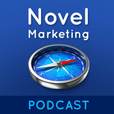
Summary: <br> <br> Author Media presents Novel Marketing, the longest-running book marketing podcast in the world. This is the show for writers who want to build their platform, sell more books, and change the world with writing worth talking about. <br> <br> <br> <br> Today we are answering a listener question.<br> <br> <br> <br> I’m your host, the professor of book sales, Thomas Umstattd Jr., and today we are going to talk about indie printing specifically print on demand vs offset.<br> <br> <br> <br> Yes ladies and gentlemen, we are talking about paper. Paper prices are going up and Amazon is at fault. More and more paper companies are switching to making cardboard for amazon boxes and the result is that paper is getting more expensive for everyone. <br> <br> <br> <br> This episode comes from a listener question. If you would like to ask a question you can all our listener helpline or upload an audio file on our website at AuthorMedia.com. <br> <br> <br> <br> Listener question<br> <br> <br> <br> Great question! Lets talk about print on demand and offset printing. <br> <br> <br> <br> Print on Demand Explained<br> <br> <br> <br> * Print on demand uses similar technology to an office laser printer to print books one at a time. Electric drums put toner on paper. <br> <br> <br> <br> Pros:<br> <br> <br> <br> * Logistically easy for the author* Low Risk* Able to iterate and make changes. * Inexpensive startup cost* Fast<br> <br> <br> <br> Cons<br> <br> <br> <br> * Expensive on a per unit basis. * Reduced printing options (Fancy paper, embossing, etc))* Only two companies to pick from Amazon KDP Print and Ingram Spark. Almost all others are just reselling those two. So if you are not getting bids from those two, and your bids seam high, that may be the reason. <br> <br> <br> <br> Offset Printing Explained<br> <br> <br> <br> * Offset printing uses metal plates to apply ink to the paper.* There are a lot of companies that do offset printing. Chances are there is a local one in your town near the main post office. <br> <br> <br> <br> Pros:<br> <br> <br> <br> * Scales well. Use the same metal sheets over and over.* Cheap on a per unit basis.* Lots of flexibility on paper options and whatnot. <br> <br> <br> <br> Cons:<br> <br> <br> <br> * Less Indie* Slow* Proofing is very important.* Logistically complex. You will need to hire Ingram or one of their competitors to help with distribution.<br> <br> <br> <br> Digital Printing<br> <br> <br> <br> * Digital Printing sometimes called digital offset uses similar technology to POD to print short runs of books. If your small publisher is printing 500 copies of your books, this is likely what they are doing.* Is a hybrid in terms of pros and cons. Not as cheap as traditional offset. * This is often offered by the same companies that do offset. <br> <br> <br> <br> Which to choose?<br> <br> <br> <br> * For adult fiction, print on demand is almost always the way to go. The money is in ebooks afterall. * For nonfiction, it depends on the size of your in person platform. If you speak a lot, offset could work. If you have a smaller platform then no. The question is can you sell 2500 paper copies in the first year or two? That would mean speaking in front of at least 10k audience members assuming a 25% audience conversion rate. * For children’s books, offset is much more common. Children expect the kind of features that offset printing provides. So if you want a whole in one of the pages for the toddler to put a finger through, you need to go offset. If you want to add scratch and sniff, offset. Etc. <br> <br> <br> <br> How to have your cake and eat it too: Crowdfunding. Crowdfunding allows you to gauge demand for a book before it co...
